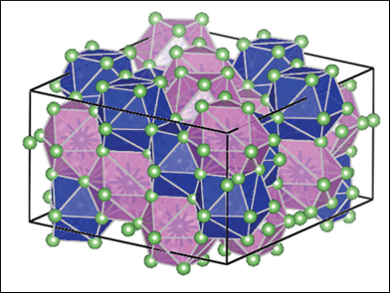The lithium-silicon system is a promising anode material for lithium-ion batteries due to its high theoretical capacity and the high natural abundance of silicon on earth. However, the silicon anode encounters significant internal stress during lithium insertion, resulting in electrode fracture and a rapid capacity decay after only few charging cycles. The crystalline lithium silicide formed during this process is Li15Si4, with large unit cells of 152 atoms.
Wendy L. Mao, Stanford University, CA, USA, and colleagues tested their computer-calculation based prediction that this so-called α-phase of Li15Si4 will undergo a phase transition under high pressure. They applied pressure and followed the transition by synchrotron X-ray diffraction and Raman spectroscopy. They found the predicted phase transition to a new orthorhombic β-phase of Li15Si4 above an applied pressure of 7 GPa. The sluggish phase transition is completed upon further pressure increase at 18 GPa.
The new β-Li15Si4 phase (pictured) has substantially improved mechanical properties, easing lithium insertion. It is also a good conductor of electrons, thereby optimizing silicon as an anode material in Li-Si batteries.
- A Novel Phase of Li15Si4 Synthesized under Pressure,
Zhidan Zeng, Qingfeng Zeng, Nian Liu, Artem R. Oganov, Qiaoshi Zeng, Yi Cui, Wendy L. Mao,
Adv. Energy Mater. 2015.
DOI: 10.1002/aenm.201500214



